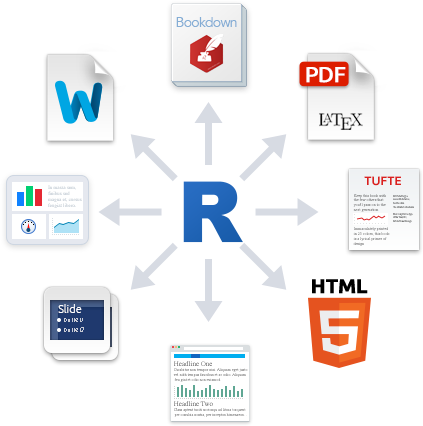19.2 Deployment


An interactive document is an R Markdown file that contains Shiny widgets and outputs. You write the report in markdown, and then launch it as an app with the click of a button. This article will show you how to write an R Markdown report. Data Scientist Jared Lander demonstrates how you can integrate Shiny into RMarkdown with ease.This lesson is an excerpt from the video course Shiny R LiveLes. 【r效率】Rmarkdown与shiny Rmarkdown markdown的语法非常非常简单,用上一天就熟悉了,还没学过的随便百度谷歌下,教程已经烂大街了,如果你实在要我推荐,就看看我之前写的 【软件推荐 markdown】Typora简介及Markdown语法精讲 吧。.
Shiny documents must be supported by a live R session running behind the scenes. When you run a Shiny document locally, it uses your local R session. Usually only you can see and interact with the document. If you want to share the document with people who do not have R installed, or do not want to run the document locally, you will have to deploy the document on a server, and share the URL of the document. Then other people only need a web browser to visit your document.
There are two ways to deploy a Shiny document. You can either use a hosted service provided by RStudio, or set up your own server. The first way is technically easier, but sometimes you may not be allowed to use an external hosted service, so you have to install the required software (Shiny Server or RStudio Connect) on your own server to deploy the Shiny documents.
- Use R Markdown to publish a group of related data visualizations as a dashboard. Support for a wide variety of components including htmlwidgets; base, lattice, and grid graphics; tabular data; gauges and value boxes; and text annotations. Flexible and easy to specify row and column-based layouts.Components are intelligently re-sized to fill the browser and adapted for display on mobile.
- The first official book authored by the core R Markdown developers that provides a comprehensive and accurate reference to the R Markdown ecosystem. With R Markdown, you can easily create reproducible data analysis reports, presentations, dashboards, interactive applications, books, dissertations, websites, and journal articles, while enjoying the simplicity of Markdown and the great power of.
19.2.1 ShinyApps.io
You can publish Shiny documents to the ShinyApps (https://shinyapps.io) hosted service. To do this you, should ensure that you have:
R Shiny And Markdown
An account on ShinyApps (use the signup form to request an account).
A latest version of the rsconnect R package. You can install this as follows:
You can then deploy an interactive Shiny document in the same way that you currently deploy normal Shiny applications. From the working directory containing the document(s), just execute:
If you are using RStudio, you can also use the Publish button available at the top-right of the window when running a Shiny document (see Figure 19.4).
FIGURE 19.4: Deploy a Shiny document to ShinyApps.io.
R Markdown Shiny Dashboard
If there is a file named index.Rmd in the directory, it will be served as the default document for that directory, otherwise an explicit path to the Rmd file should be specified in the URL if you want to visit this Rmd document. For example, the URL for index.Rmd deployed to ShinyApps may be of the form https://example.shinyapps.io/appName/, and the URL for test.Rmd may be of the form https://example.shinyapps.io/appName/test.Rmd.
19.2.2 Shiny Server / RStudio Connect
R Shiny Markdown Pokemon
Both Shiny Server (https://www.rstudio.com/products/shiny/shiny-server/) and RStudio Connect (https://www.rstudio.com/products/connect/) can be used to publish Shiny documents. They require knowledge about Linux. Installing and configuring them should normally be a task for your system administrator if you are not familiar with Linux or do not have the privilege.
